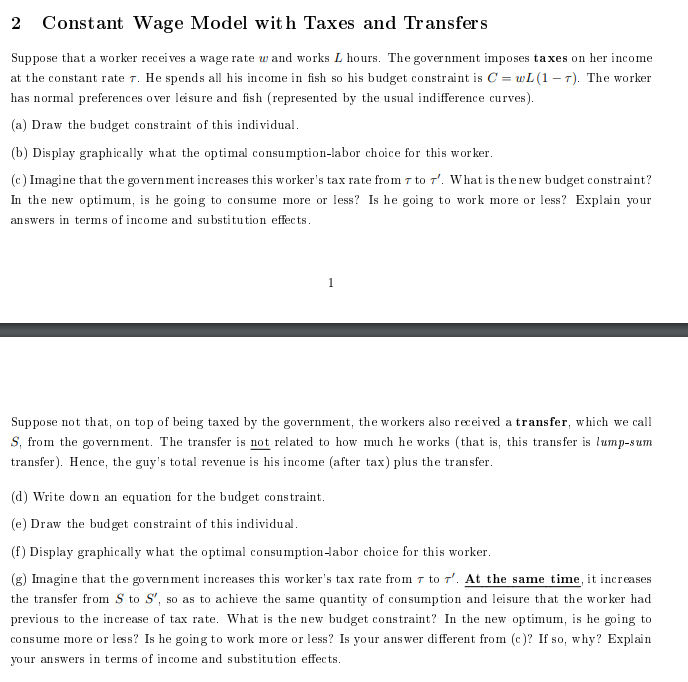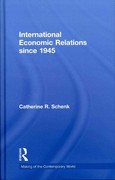Question
Constant Wage Model with Taxes and Transfers Suppose that a worker receives a wage rate w and works L hours. The government imposes taxes on
Constant Wage Model with Taxes and Transfers Suppose that a worker receives a wage rate w and works L hours. The government imposes taxes on her income at the constant rate . He spends all his income in sh so his budget constraint is C = wL(1 ). The worker has normal preferences over leisure and sh (represented by the usual indierence curves).
(a) Draw the budget constraint of this individual.
(b) Display graphically what the optimal consumption-labor choice for this worker.
(c) Imagine that the government increases this worker's tax rate from to 0 . What is the new budget constraint? In the new optimum, is he going to consume more or less? Is he going to work more or less? Explain your answers in terms of income and substitution eects. 1 Suppose not that, on top of being taxed by the government, the workers also received a transfer, which we call S, from the government. The transfer is not related to how much he works (that is, this transfer is lump-sum transfer). Hence, the guy's total revenue is his income (after tax) plus the transfer.
(d) Write down an equation for the budget constraint. (e) Draw the budget constraint of this individual.
(f) Display graphically what the optimal consumption-labor choice for this worker.
(g) Imagine that the government increases this worker's tax rate from to 0 . At the same time, it increases the transfer from S to S 0 , so as to achieve the same quantity of consumption and leisure that the worker had previous to the increase of tax rate. What is the new budget constraint? In the new optimum, is he going to consume more or less? Is he going to work more or less? Is your answer dierent from (c)? If so, why? Explain your answers in terms of income and substitution effects.

Step by Step Solution
There are 3 Steps involved in it
Step: 1

Get Instant Access to Expert-Tailored Solutions
See step-by-step solutions with expert insights and AI powered tools for academic success
Step: 2

Step: 3

Ace Your Homework with AI
Get the answers you need in no time with our AI-driven, step-by-step assistance
Get Started


